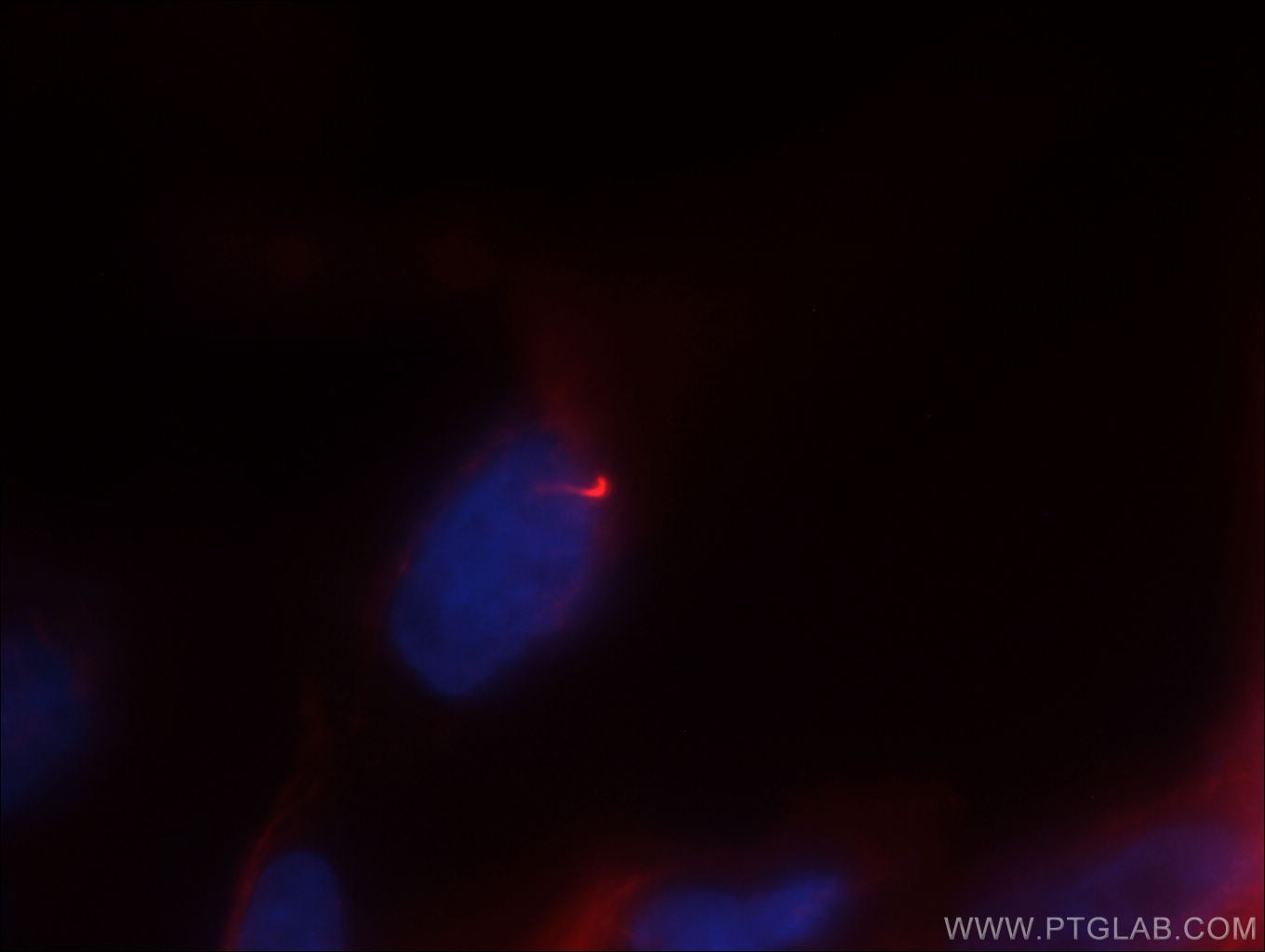Anticorps Monoclonal anti-acetylated Tubulin(Lys40)
acetylated Tubulin(Lys40) Monoclonal Antibody for IF
Hôte / Isotype
Mouse / IgG1
Réactivité testée
canin, Humain, porc, rat, souris et plus (1)
Applications
IF
Conjugaison
CoraLite®594 Fluorescent Dye
CloneNo.
7E5H8
N° de cat : CL594-66200
Synonymes
Galerie de données de validation
Applications testées
| Résultats positifs en IF | cellules MDCK, |
Dilution recommandée
| Application | Dilution |
|---|---|
| Immunofluorescence (IF) | IF : 1:50-1:500 |
| It is recommended that this reagent should be titrated in each testing system to obtain optimal results. | |
| Sample-dependent, check data in validation data gallery | |
Applications publiées
| IF | See 3 publications below |
Informations sur le produit
CL594-66200 cible acetylated Tubulin(Lys40) dans les applications de IF et montre une réactivité avec des échantillons canin, Humain, porc, rat, souris
| Réactivité | canin, Humain, porc, rat, souris |
| Réactivité citée | poisson-zèbre |
| Hôte / Isotype | Mouse / IgG1 |
| Clonalité | Monoclonal |
| Type | Anticorps |
| Immunogène | Peptide |
| Nom complet | tubulin, alpha 1a |
| Masse moléculaire calculée | 52 kDa |
| Numéro d’acquisition GenBank | NM_006009 |
| Symbole du gène | TUBA1A |
| Identification du gène (NCBI) | 7846 |
| Conjugaison | CoraLite®594 Fluorescent Dye |
| Excitation/Emission maxima wavelengths | 588 nm / 604 nm |
| Forme | Liquide |
| Méthode de purification | Purification par protéine G |
| Tampon de stockage | PBS avec glycérol à 50 %, Proclin300 à 0,05 % et BSA à 0,5 %, pH 7,3. |
| Conditions de stockage | Stocker à -20 °C. Éviter toute exposition à la lumière. Stable pendant un an après l'expédition. L'aliquotage n'est pas nécessaire pour le stockage à -20oC Les 20ul contiennent 0,1% de BSA. |
Informations générales
Tubulin, composed of heterodimers of alpha and beta tubulin, is the mainly component of microtubules which play important roles in cell motility, mitosis, and intracellular vesicle transport. Both alpha and beta tubulin undergo several posttranslational modifications such as polyglutamylation and acetylation/deacetylation. Tubulin acetylation occurs on lysine-40 at the N-terminal of alpha tubulin and is conserved across species. The histone deacetylase HDAC6 and SIRT2 has been identified as tubulin deacetylases. Reversible acetylation of alpha tubulin may be implicated in regulating microtubule stability, cell motility, and axon regeneration. The level of acetylated tubulin has been linked to epithelial malignancies and sensitivity to chemotherapy. In addition, acetylated tubulin has been widely used as a marker for primary cilia. This antibody is specific to the acetylated tubulin; it does not recognize non-acetylated tubulin. (24268707, 23881549) And this anitbody is CL594(Ex/Em 593 nm/614 nm) conjugated.
Protocole
| Product Specific Protocols | |
|---|---|
| IF protocol for CL594 acetylated Tubulin(Lys40) antibody CL594-66200 | Download protocol |
| Standard Protocols | |
|---|---|
| Click here to view our Standard Protocols |
Publications
| Species | Application | Title |
|---|---|---|
J Neurosci Comparison of ciliary targeting of two rhodopsin-like GPCRs: role of C-terminal localization sequences in relation to cilium type. | ||
Cell Biosci IK is essentially involved in ciliogenesis as an upstream regulator of oral-facial-digital syndrome ciliopathy gene, ofd1 |


